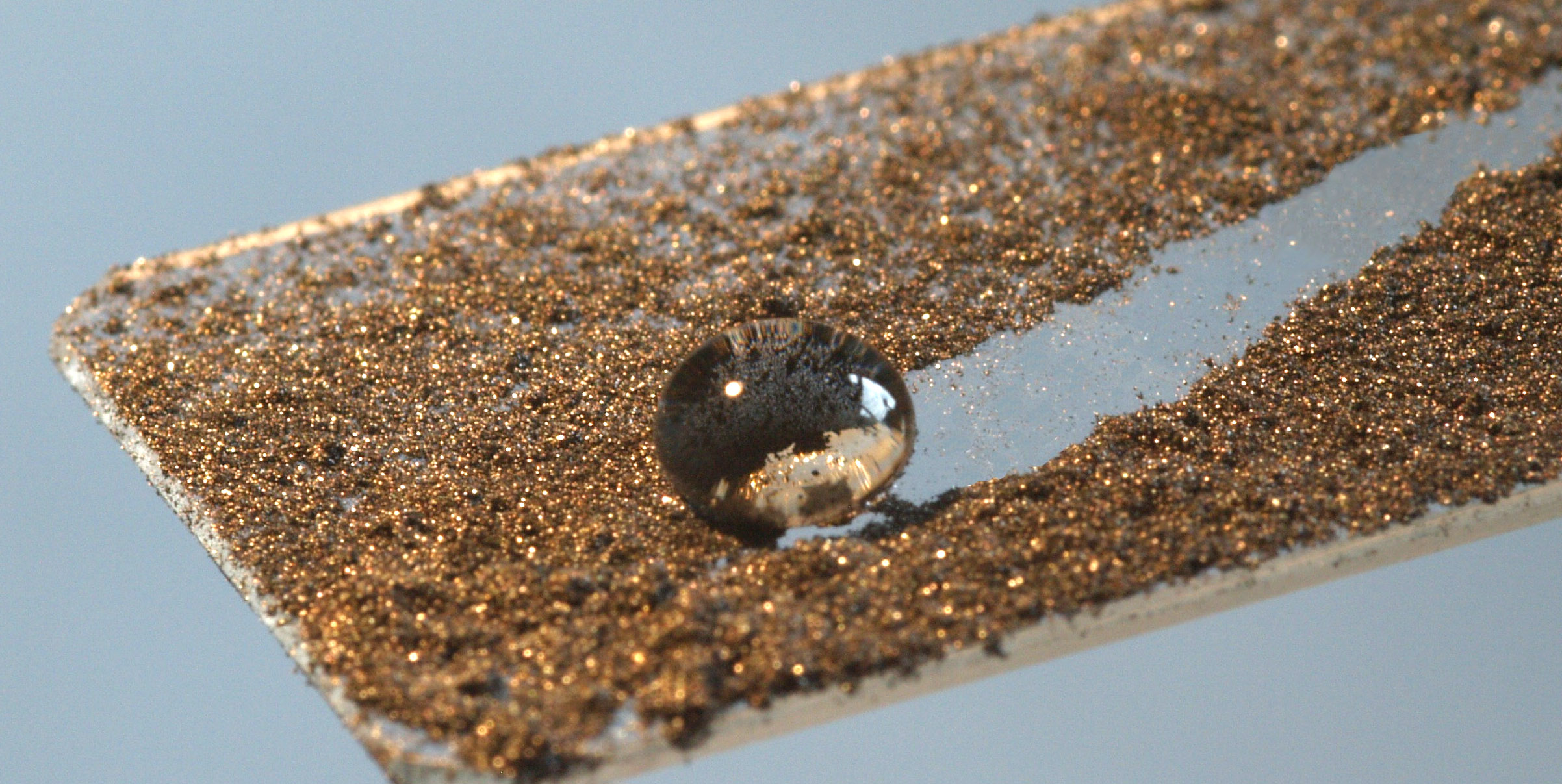The wetting properties of optical and technical surfaces are of crucial importance for their functional properties in many applications. Examples are self-cleaning superhydrophobic surfaces (architectural glass) and technical surfaces with optimal oleophilic wettability (e.g. highly stressed mechanical parts).
A significant factor for the wetting properties of a surface is, aside from its chemical properties, the surface roughness. Therefore, the technological implementation requires a specific surface structure. For this purpose, a novel method has been developed at Fraunhofer IOF that links roughness and wetting properties through roughness analysis and data evaluation.
For the characterization of wetting properties, a contact angle measurement system is used. The modular instrument allows for automatic drop dosage, sample tilt for roll and slide-off experiments, heating of sample and test fluid as well as comprehensive methods of data acquisition for static or dynamic contact angles analysis.
